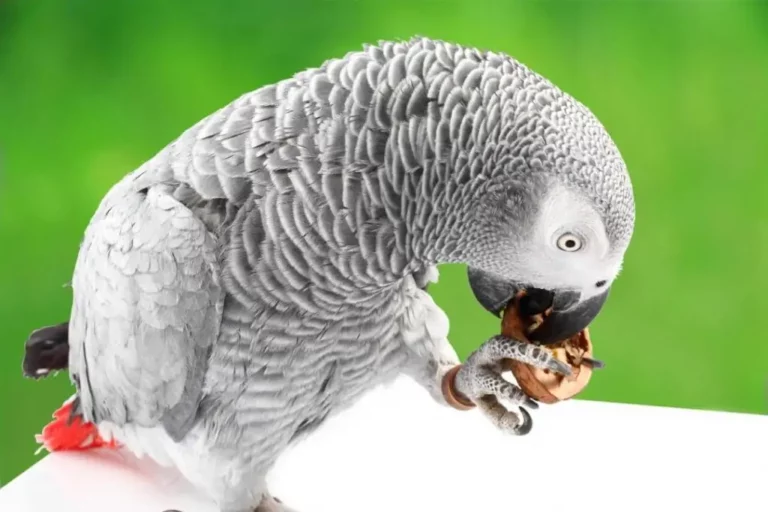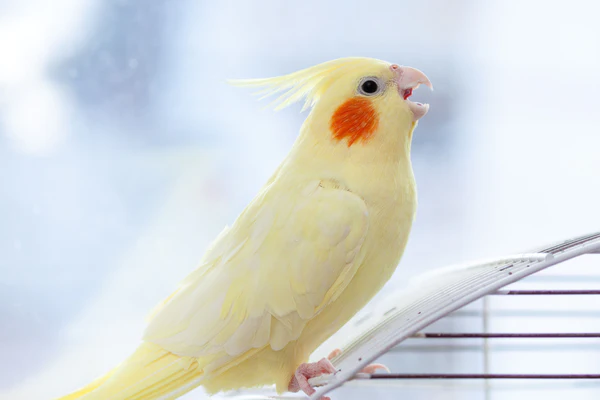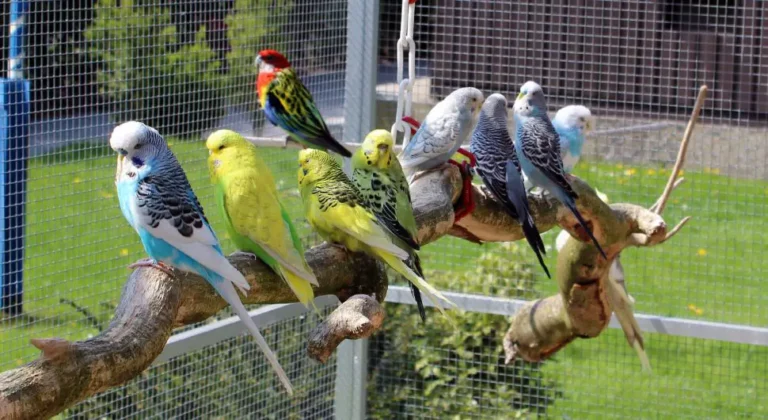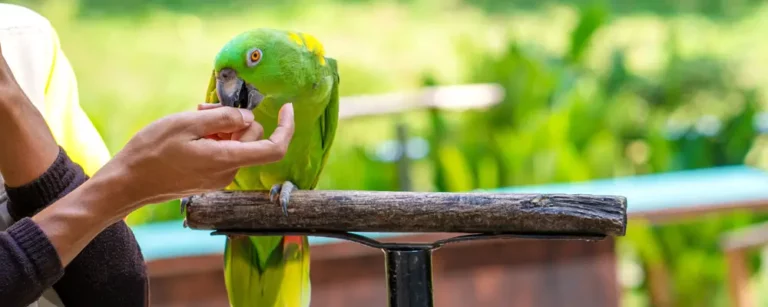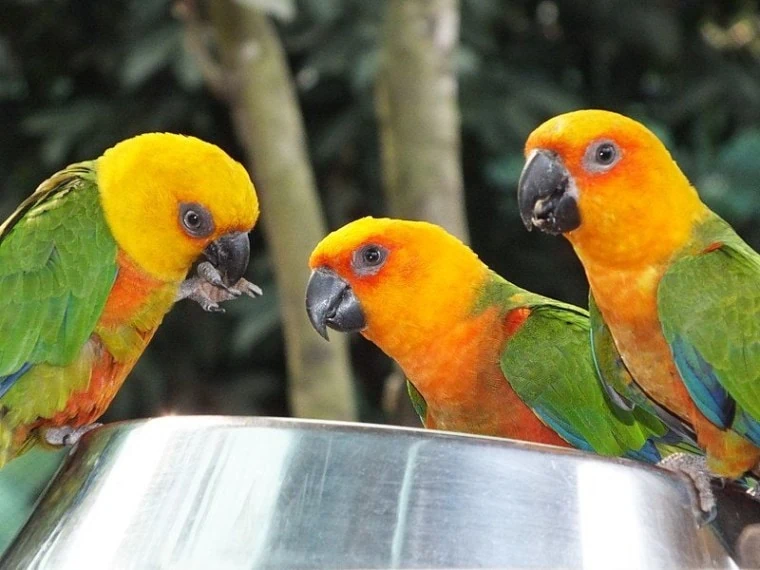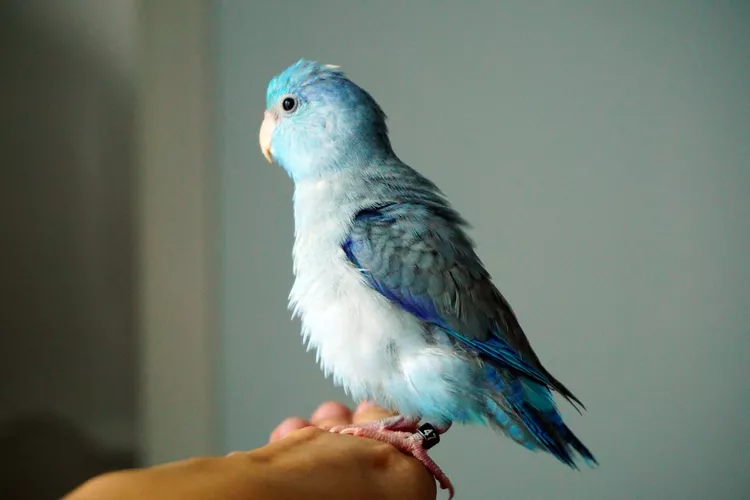How Do Parakeets Sleep: Understanding Their Sleeping Habits
Parakeets, also known as budgies, are lively, social birds known for their vibrant colors and melodious chirping. One of the fascinating aspects of parakeet behavior is their sleeping habits. The topic, ‘how do parakeets sleep‘, often intrigues parakeet owners and bird enthusiasts alike.
Understanding their sleep patterns not only helps in ensuring their overall well-being but also in creating a conducive environment for their rest. In this post, we will explore the unique ways parakeets sleep, dive deep into their sleep cycle, and answer common questions about their sleep-related behaviors.
Key Takeaways:
- Parakeets have unique sleep patterns that differ from humans.
- They require a calm and safe environment for their rest.
- It’s crucial to understand and respect their sleep habits for their overall health and happiness.
- Knowing their sleep habits can help you detect any anomalies that may indicate health issues.
The Parakeet Sleep Mechanism
Just like any living creature, parakeets require sleep to maintain their health and energy. However, their sleep mechanism might be quite different from what you expect. Let’s unveil the mystery behind their sleep habits.
Do Parakeets Sleep with Their Eyes Open?
Interestingly, parakeets, like most birds, have the ability to sleep with one eye open. This is a survival mechanism known as unihemispheric slow-wave sleep, which allows them to stay alert to potential predators even while they’re resting.
However, in a safe and secure environment, your pet parakeet is likely to sleep with both eyes closed for a deeper and more restful sleep.
Do Parakeets Sleep Standing Up?
Yes, parakeets do sleep standing up! They have a specialized tendon mechanism in their feet that locks into place when they bend their legs, allowing them to perch securely even during sleep without the risk of falling.
Do Parakeets Sleep at Night or During the Day?
Parakeets are diurnal creatures, meaning they’re active during the day and sleep at night, just like humans. They usually settle down for sleep once the sun sets and wake up at dawn.
How Long Do Parakeets Sleep?
On average, parakeets sleep between 10 to 12 hours a day, usually spanning the night period. It’s crucial to ensure they get undisturbed sleep during this time, as continuous sleep deprivation can lead to health problems and behavioral changes in parakeets.
The Sleep Cycle of Parakeets
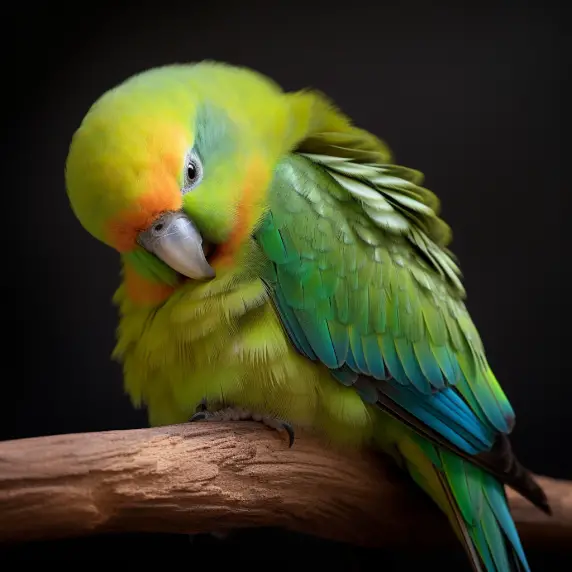
Understanding the sleep cycle of your parakeet is crucial for maintaining their health and well-being. The quality of their sleep directly affects their mood, behavior, and overall health.
How Parakeets Sleep: The Physiological Process
Parakeets, similar to other avian species, have two main types of sleep – slow-wave sleep (SWS) and rapid eye movement (REM) sleep. During SWS, the parakeet’s brain waves slow down, allowing for rest and recovery. After a period of SWS, the parakeet enters REM sleep, which is when dreams occur.
Although parakeets experience both SWS and REM sleep, the duration of each sleep stage varies. Most of their sleep time is spent in SWS, with only brief periods of REM sleep. This pattern allows parakeets to get the rest they need while still being able to quickly awaken if a threat is detected.
Parakeet Sleep Patterns: Night Sleep and Daytime Naps
Primarily, parakeets sleep at night, aligning their sleep schedule with the natural day-night cycle. This is why you’ll notice your parakeet becoming quiet and less active as the sun sets.
During the day, parakeets might take short naps, especially after a meal or a period of vigorous activity. These daytime naps are generally brief, allowing them to recharge while not missing out on daytime activities.
It’s crucial to respect these sleep patterns and provide a quiet and calm environment for your parakeet during its sleep time.
Recognizing Sleep Signs in Parakeets
Recognizing the signs that your parakeet is ready for sleep can be useful in helping maintain a consistent routine and avoid disturbing them during their rest period.
Physical Signs That a Parakeet Is Sleeping
Parakeets have several tell-tale signs when they’re about to snooze or already in dreamland. Firstly, they will often fluff up their feathers – this helps them retain body heat and makes for a comfortable sleep. They might also lean on one foot while tucking the other into their feathers.
Another sign is the head tilt – many parakeets will turn their heads around and tuck their beaks into their back feathers. It’s a classic sleeping pose for parakeets and other birds, offering warmth and protection.
Typical Sleeping Positions
In addition to the one-foot stand and head tilt, there are other typical positions parakeets adopt while sleeping:
- The Side Rest: Some parakeets prefer to lean to one side when they sleep. They rest their body on the perch, supported by one leg, with their head tucked into their back feathers.
- The Flat Rest: Occasionally, parakeets might sleep lying flat on their belly, especially if they are young or feel very safe in their environment.
- The Cluster: If you have more than one parakeet, you might notice them sleeping close together. This cluster position provides warmth and security, strengthening the bonds between the birds.
The Role of “Night Frights” in Parakeet Sleep Behavior
Night frights” are a common phenomenon in parakeets and other pet birds. They can be startled awake by sudden noises, changes in light, or perceived threats, causing a panicked flight around the cage that could lead to injury.
Providing a small night light or partially covering the cage can help mitigate these frights by allowing your parakeet to see its surroundings if it awakens unexpectedly. Being aware of potential triggers and managing them will ensure your parakeet has peaceful, uninterrupted sleep.
Environmental Impacts on Parakeet Sleep
The environment in which a parakeet resides has a significant impact on its sleep patterns. It’s essential to create a comfortable and secure environment for your pet parakeet to ensure it gets the rest it needs.
Can Budgies Sleep with the TV On?
The answer to this question is, generally, no. Budgies, like other birds, are sensitive to light and sound. Having the TV on can interfere with their sleep cycle by providing inconsistent light and sound levels, which can lead to stress and potential health problems.
A quiet, dark environment is best for your parakeet’s sleep. If you do keep a TV or another source of noise in the same room, consider using a cage cover or moving your bird to a quieter room for the night.
Where Do Wild Parakeets Sleep?
Understanding where wild parakeets sleep can give us insights into creating a comfortable sleeping environment for pet parakeets. In the wild, parakeets usually sleep in trees or other high, secluded places. They prefer these locations as they provide protection from predators and the elements.
In a similar vein, providing a high perch for your pet parakeet in its cage can give it a sense of security, contributing to better sleep. This perch should be placed away from food and water dishes to avoid contamination. A variety of perch sizes and materials can also help keep your parakeet’s feet healthy.
Creating an Ideal Sleep Environment for Parakeets
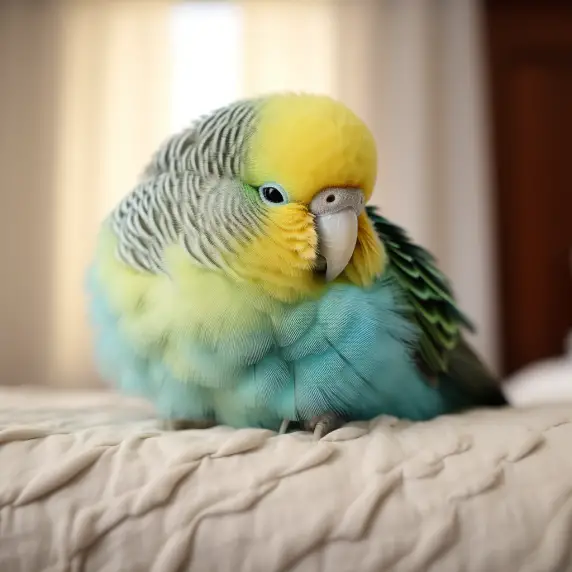
Ensuring your parakeet has a comfortable sleep environment is paramount to their overall health and well-being. Let’s discuss various factors that contribute to creating the perfect sleep setting for your parakeet.
Importance of Cage Placement
Where you place your parakeet’s cage plays a significant role in their sleep quality. Parakeets, by nature, feel safest in high places. Therefore, the cage should be placed at a height where your bird can perch at your eye level.
Avoid areas near kitchens, windows, or high-traffic areas to minimize exposure to fumes, drafts, and noise.
Parakeet Sleeping on Bottom of Cage: Indications and Precautions
If your parakeet is sleeping on the bottom of the cage, this might indicate illness or discomfort. Typically, healthy parakeets sleep on perches. Consult a veterinarian if you notice this behavior, especially if it’s accompanied by other signs of illness like ruffled feathers, changes in eating habits, or lethargy.
Using Sleep Covers: Pros and Cons
Sleep covers can be beneficial by providing a dark, quiet environment for your parakeet. However, they can also trap drafts and lower the temperature inside the cage. If you choose to use a cover, ensure it’s breathable and only covers three sides of the cage.
Appropriate Temperature and Lighting for Sleep
Parakeets prefer a consistent, moderate temperature of around 65-75 degrees Fahrenheit (18-24 degrees Celsius). Rapid fluctuations in temperature can be stressful for your bird. Lighting should mimic natural light cycles, with 12 hours of light and 12 hours of darkness.
Use natural light where possible, but if not, use a timer to maintain consistency.
The Use of Sleep Huts or Hammocks: Benefits and Considerations
Sleep huts or hammocks can provide a cozy spot for your parakeet to sleep. However, it’s crucial to regularly inspect these accessories for wear and tear, as loose threads can pose a risk. Some birds may also become territorial over their huts, so monitor your bird’s behavior closely.
How Diet and Exercise Impact Parakeet Sleep
The lifestyle of your parakeet, especially their diet and exercise, has a profound influence on their sleep. Let’s delve into the critical role these elements play.
The Role of a Healthy Diet in Promoting Good Sleep
A balanced diet is key to your parakeet’s overall well-being, including their sleep quality. A diet rich in fresh fruits, vegetables, and high-quality bird pellets ensures your parakeet gets all the necessary nutrients they need to sustain healthy sleep cycles. Seeds should only be a small part of their diet due to their high-fat content.
The Importance of Daytime Activity and Exercise
Just as with humans, exercise is vital for your parakeet’s sleep. Daytime activities and physical exertion help ensure your parakeet is tired enough to get a good night’s sleep. Encourage exercise by providing toys, out-of-cage playtime, and a large enough cage for your bird to move around.
Effects of Overfeeding or Poor Nutrition on Sleep
Overfeeding your parakeet, particularly with a diet high in fat and low in nutrients, can lead to obesity, lethargy, and consequently, sleep disturbances. Monitor your bird’s food intake, maintain a balanced diet, and encourage regular exercise to ensure your parakeet stays healthy and sleeps well.
Common Sleep Issues in Parakeets and How to Address Them
Sleep plays an integral role in a parakeet’s life. However, like any other living creature, parakeets can also experience sleep disturbances. Let’s discuss some of these problems and how they can be addressed.
Overview of Common Sleep Problems: Insomnia, Excessive Sleep, etc.
Parakeets can face various sleep issues, from insomnia and restlessness to excessive sleep or irregular sleep patterns. You may notice that your parakeet seems more lethargic during the day or stays awake when they should be asleep. These disruptions can significantly impact their health and overall happiness.
Potential Causes of These Problems: Illness, Stress, Environment
Various factors can cause sleep issues in parakeets. Illnesses, both physical and psychological, can lead to sleep disturbances. So can stress, which might result from changes in the environment, lack of social interaction, or even a new diet. Even the environment itself, such as temperature changes, noise, or inappropriate cage location, can disrupt a parakeet’s sleep.
When to Seek Veterinary Advice
It’s essential to monitor your parakeet’s sleep patterns and recognize when something is off. If your parakeet shows signs of sleep issues that persist or if you notice drastic changes in their behavior, it’s crucial to consult a veterinarian. These signs could indicate an underlying health issue that needs immediate attention.
Related:
Frequently Asked Questions
Do Parakeets Lay Down to Sleep?
Parakeets do not lay down to sleep. Instead, they sleep while perched on a branch or a stand, often standing on one foot with their head tucked into their back feathers for warmth and comfort.
Do Parakeets Need to Be Covered at Night?
Some parakeets may feel more secure and sleep better with a cover over their cage at night. However, it’s not a necessity. If you choose to cover your parakeet’s cage, ensure it’s with a breathable fabric and that there is adequate ventilation.
Do Parakeets Need a Bed?
Parakeets do not need a traditional bed. They are comfortable sleeping while perched. However, providing a soft sleeping hut or hammock in the cage can provide an additional area for them to rest or hide if they choose.
What Time Should a Parakeet Go to Bed?
Parakeets generally follow the sun’s cycle, going to bed around dusk and waking up at dawn. This pattern may vary based on your specific bird and environmental light exposure. It’s best to observe and respect your parakeet’s natural sleeping patterns.
Final Thoughts
Understanding the sleep habits of parakeets is crucial for their health and well-being. By paying attention to their unique sleeping behaviors and accommodating their needs, you can ensure your feathery friends have a comfortable and restful night’s sleep.
Keep in mind that every parakeet is unique, and what works for one may not work for another. Experiment with different strategies and pay attention to your bird’s responses to find the best solution for your pet.
Always remember to consult with a veterinarian if you notice any drastic changes in your parakeet’s sleep behavior, as it may be an indicator of health issues. With the right knowledge and tools, you can create an ideal sleep environment for your parakeet, contributing significantly to its overall happiness and well-being.

